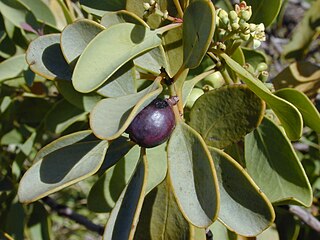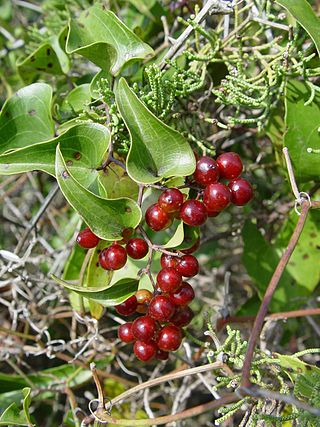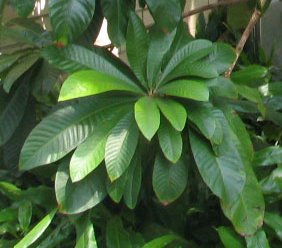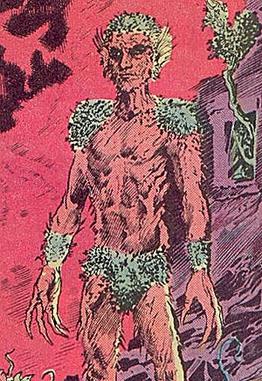
Swamp Thing is a superhero and antihero appearing in American comic books published by DC Comics. Created by writer Len Wein and artist Bernie Wrightson, the Swamp Thing has had several different incarnations throughout his publication. The character first appeared in House of Secrets #92 in a stand-alone horror story set in the early 20th century. The character found perhaps its greatest popularity during the original 1970s Wein/Wrightson run and in the mid-late 1980s during a highly acclaimed run under Alan Moore, Stephen Bissette, and John Totleben. Swamp Thing would also go on to become one of the staples of the Justice League Dark, a team featuring magical superheroes.

Poison Ivy is a character appearing in American comic books published by DC Comics. Created by writer Robert Kanigher and artist Carmine Infantino, she debuted in Batman #181 and has become one of the superhero Batman's most enduring enemies belonging to the collective of adversaries that make up his rogues gallery.

Boraginaceae, the borage or forget-me-notfamily, includes about 2,000 species of shrubs, trees, and herbs in 146 to 154 genera with a worldwide distribution.

The Santalaceae, sandalwoods, are a widely distributed family of flowering plants which, like other members of Santalales, are partially parasitic on other plants. Its flowers are bisexual or, by abortion, unisexual. Modern treatments of the Santalaceae include the family Viscaceae (mistletoes), previously considered distinct.

Smilax is a genus of about 300–350 species, found in the tropics and subtropics worldwide. They are climbing flowering plants, many of which are woody and/or thorny, in the monocotyledon family Smilacaceae, native throughout the tropical and subtropical regions of the world. Common names include catbriers, greenbriers, prickly-ivys and smilaxes. Sarsaparilla is a name used specifically for the Neotropical S. ornata as well as a catch-all term in particular for American species. Occasionally, the non-woody species such as the smooth herbaceous greenbrier are separated as genus Nemexia; they are commonly known by the rather ambiguous name carrion flowers.

Hibiscus is a genus of flowering plants in the mallow family, Malvaceae. The genus is quite large, comprising several hundred species that are native to warm temperate, subtropical and tropical regions throughout the world. Member species are renowned for their large, showy flowers and those species are commonly known simply as "hibiscus", or less widely known as rose mallow. The genus includes both annual and perennial herbaceous plants, as well as woody shrubs and small trees.

Ranunculaceae is a family of over 2,000 known species of flowering plants in 43 genera, distributed worldwide.

The Francoaceae are a small family of flowering plants in the order Geraniales, including the genera Francoa, commonly known as bridal wreaths. The Francoaceae are recognized as a family under various classification schemes. Under the 2009 APG III system the Francoaceae were included within the Melianthaceae. In the 2016 APG IV system the Francoaceae are again recognized as a family, with Melianthaceae included in the circumscription of Francoaceae.

The United States Botanic Garden (USBG) is a botanical garden on the grounds of the United States Capitol in Washington, D.C., near the James A. Garfield Monument.

Melastomataceae is a family of dicotyledonous flowering plants found mostly in the tropics comprising c. 175 genera and c. 5115 known species. Melastomes are annual or perennial herbs, shrubs, or small trees.

Solomon Grundy is a supervillain and occasional antihero appearing in American comic books published by DC Comics. He was originally depicted as a murder victim brought back to life as a corporeal revenant or zombie, though subsequent versions of the character have occasionally depicted a different origin. His name is taken from the 19th century nursery rhyme "Solomon Grundy".

The Sapotaceae are a family of flowering plants belonging to the order Ericales. The family includes about 800 species of evergreen trees and shrubs in around 65 genera. Their distribution is pantropical.

The Floronic Man, also known as the Plant Master, Floro, and the Seeder, is a supervillain appearing in American comic books published by DC Comics.

Desmodium is a genus of plants in the legume family Fabaceae, sometimes called tick-trefoil, tick clover, hitch hikers or beggar lice. There are dozens of species and the delimitation of the genus has shifted much over time. Species are distributed widely – from Quebec to northern Argentina in the Americas, across northern and southern tropical Africa, in the southern Arabian Peninsula, in Myanmar and Thailand, New Guinea, and northern and eastern Australia.

Misodendrum is a genus of hemiparasites which grow as mistletoes on various species of Nothofagus. Its species are all restricted to South America. The name of the genus is incorrectly spelt in a number of ways, including Misodendron and Myzodendron.

Astereae is a tribe of plants in the family Asteraceae that includes annuals, biennials, perennials, subshrubs, shrubs, and trees. They are found primarily in temperate regions of the world. Plants within the tribe are present nearly worldwide divided into over 250 genera and more than 3,100 species, making it the second-largest tribe in the family behind Senecioneae.

The Cardueae are a tribe of flowering plants in the daisy family (Asteraceae) and the subfamily Carduoideae. Most of them are commonly known as thistles; four of the best known genera are Carduus, Cynara, Cirsium, and Onopordum.
The Carnegie Institution for Science, also known as Carnegie Science and the Carnegie Institution of Washington, is an organization established to fund and perform scientific research in the United States. This institution is headquartered in Washington, D.C. As of June 30, 2020, the Institution's endowment was valued at $926.9 million. In 2018, the expenses for scientific programs and administration were $96.6 million. American astrophysicist John Mulchaey is the current president of the Institute.

On November 3, 2020, the District of Columbia held elections for several local and federal government offices. Its primary elections were held on June 2, 2020.


















